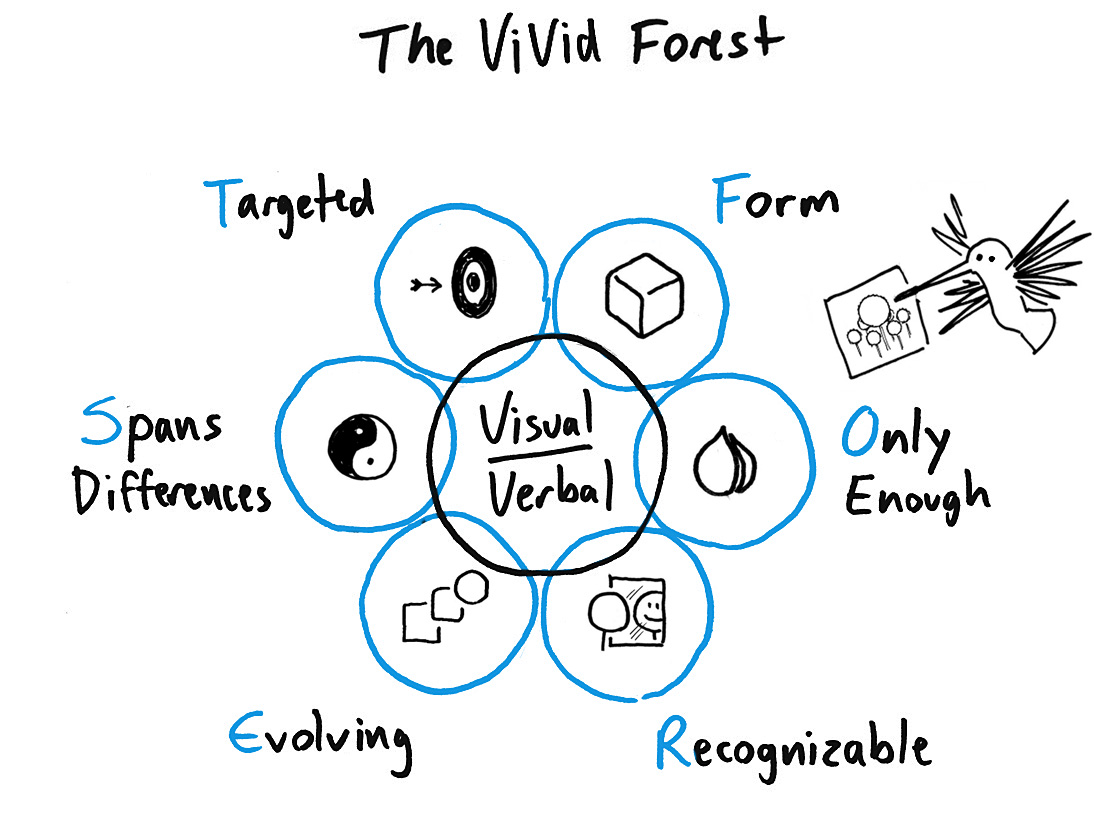Making Ideas User-Friendly
This is a review of Blah Blah Blah: What To Do When Words Don’t Work.
Ever sat in a meeting and upon walking out the door, realized you retained none of what was said?
According to Roam, you were a victim of the Blah Blah Blahs.
The Blah Blah Blahs happen when we don’t think about the way we present our ideas to other people. Often we create overly complex, boring ways to describe ideas that are simple and insightful.
Roam’s book provides a guide on how to improve the way we communicate and present information to others. The main takeaway from the book is simple: complex is never better. Once we rid ourselves of long-winded, complicated descriptions, we can instead focus on how to make user-friendly ideas.
Roam introduces the idea of Vivid Thinking, a way to translate words into pictures. The goal of Vivid Thinking is to prevent boring, complex, and misleading ideas. Good ideas should be like Dr. Seuss books: filled with engaging text and lively illustrations.
Vivid Thinking is the basis of the book and can be used to ensure:
- The message is clear
- The idea is simple
- The intent is to clarify
- What is being presented is easy to understand
Roam gives us three tools to ensure our writing is free of the three blahs (boring, foggy, and misleading)
Tool #1: The Blah Blahmeter

Business meetings often fall into the right side of the chart more often than the left. Rarely does a meeting provide clear and simple ideas. Throughout the book, Roam provides examples of clear and concise (Dr. Seuss) and misleading and rotten (Bernie Madoff describing his business model).
But what do I do if my idea is boring, foggy, or misleading?
Using visuals, we can simplify our ideas to the core.
Tool #2: The Vivid Grammar Graph
According to Roam, all ideas can be expressed by using a few short rules.
 Vivid Grammar
Vivid Grammar
The Vivid Grammar Graph acts as a visual translator for ideas. To use the Vivid Grammar graph, first, we must reduce our idea to the basics of grammar. Using the graph, we can draw simple illustrations that show our ideas.
Tool #3. The Vivid F.O.R.E.S.T.
Finaly, the Vivid F.O.R.E.S.T provides us with the ability to ensure our ideas clear, simple, and memorable. F.O.R.E.S.T. provides a checklist:
- Form: Does the idea have form?
- Only Essentials: Has the idea been distilled its essence?
- Recognizable: Is the idea recognizable?
- Evolving: Can the idea evolve?
- Span differences: Does the idea account for opposites?
- Targeted: Is the idea targeted?
 Vivid Forest
Vivid Forest
Takeaways
What can we take away from Vivid Thinking?
- Ideas should be straight forward and simple
- Ideas CAN be conveyed with text AND visuals
- Ideas SHOULD be conveyed with text and visuals
- With a small amount of work, we can restructure our ideas to be user-friendly
We can circle back to the idea of the boring meeting we often attend where we retain no information. Instead of reading papers or listening to presentations filled with texts, we can instead imagine a presentation filled with helpful visuals that aid in understanding. Instead of walking away more puzzled than when we entered the meeting, we’ll have a clear image of what the presenter was conveying to us.
